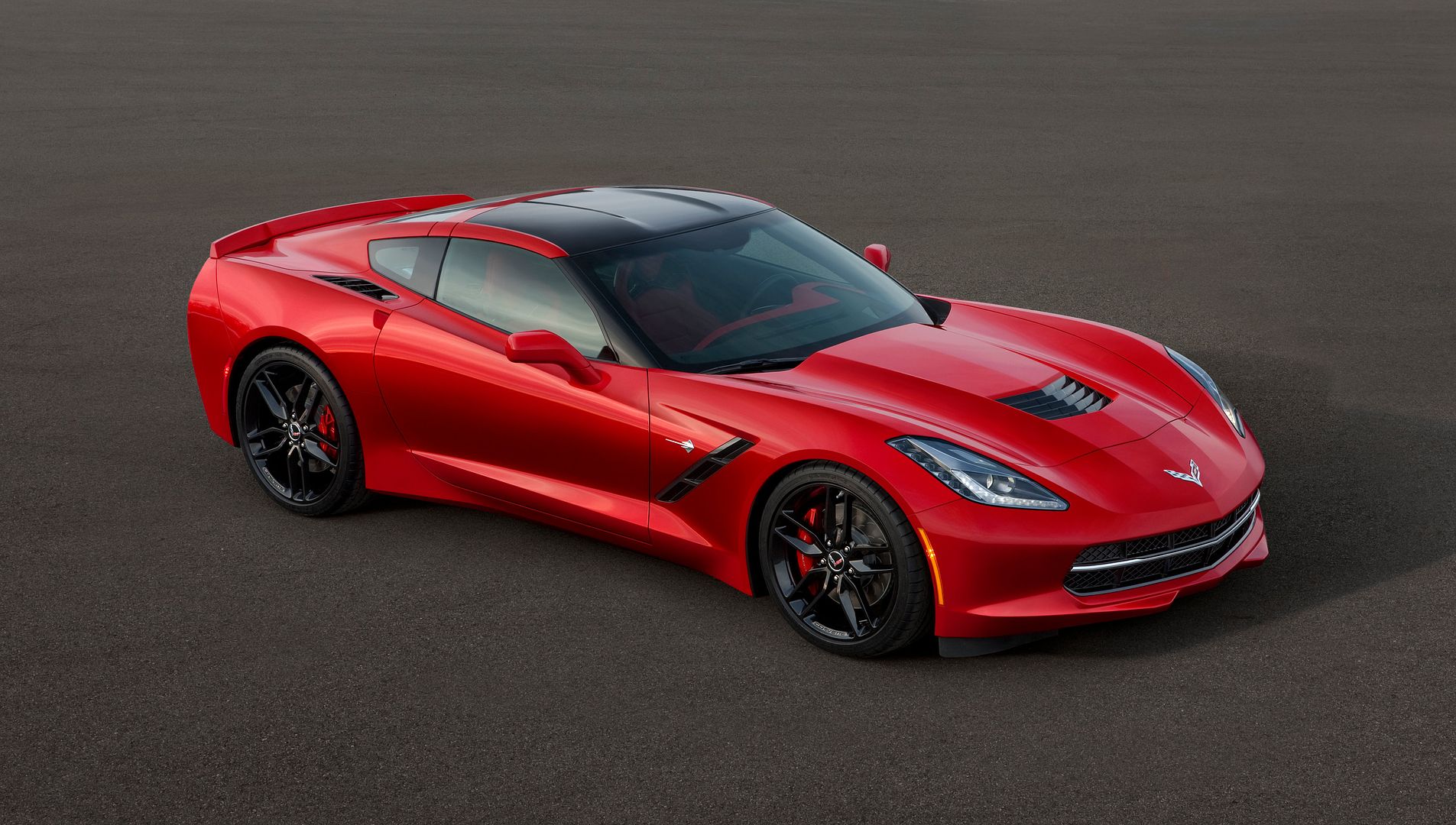2014 Chevrolet Corvette
General Motors this evening took the wraps off the seventh generation Chevrolet Corvette, a 450-horsepower high-tech American sports car that says as much about GM in the post-bankruptcy era as any financial spreadsheet or marketing campaign.
“It’s a huge statement,” Mark Reuss, GM’s president of North American operations, told me earlier in the day, after giving some 400 employees a sneak peak. “It punctuates a new General Motors that takes risks, important risks,” like incorporating cutting-edge technology that will work its way into the rest of GM’s lineup.
The new Corvette, for instance, incorporates lightweight materials to a degree not seen on even the most exotic cars, including a carbon fiber hood and removable roof panel, and a carbon-reinforced aluminum frame. The normally high-priced carbon materials are standard on every Corvette, yet the car’s price will be about the same as today’s Corvette, which ranges from about $50,000 to $113,000.
The Corvette also signals a new, more collaborative way of designing cars and trucks that cuts waste and improves quality. Hourly workers from the Corvette plant in Bowling Green, Ky., spent eighteen months commuting back and forth every week to Detroit, where they were embedded with the engineers and designers working to create the next-generation Corvette. And engineers spent time assembling the current-generation Corvette in Bowling Green to better understand the challenges of putting the cars together.
“We’ve had input from the very beginning to make sure we could build it,” said plant manager Dave Tatman.
The unprecedented level of collaboration early in the design process enabled GM to avoid some potentially embarrassing problems later. Assembly workers, for instance, pointed out a potential problem in the way hand stitching on the leather-wrapped dashboard and door panel came together in the Corvette’s striking cockpit-like interior.
“Our whole design was really threatened by that,” said Ryan Vaughan, 33, the Corvette’s interior designer. Together, engineers and factory workers came up with a specially designed tool that allows workers to pivot the two pieces as much as 2 millimeters in either direction to ensure a perfect fit every time.
Plant workers’ input also influenced the design and placement of crucial parts like hoses, electrical components and fasteners to make it easier for the factory to build it right the first time. “If we can build it well, that translates into quality on the road,” explained Mary Barra, GM’s senior vice president of global product development. She’s been working to improve GM quality and wring $1 billion in waste out of its engineering and product development efforts. “The Corvette is a model for how we want the company to work together,” she said.
The first Corvette debuted at the GM Motorama in New York City on January 17, 1953, and was an instant sensation. Since then, it has been an enduring automotive icon with a deeply loyal fan base. Of the 1.5 million built over the last 60 years, 1.4 million of them still exist.
But each generation was different, noted Reuss, who recalls being squeezed in the back of a Corvette while riding around with his father, former GM President Lloyd Reuss. “They’ve always been a sign of the times,” he said, pointing to underpowered models during the fuel crises of the 1970s. The 1978 Corvette base, for instance, managed 0-60mph in a slow 7.7 seconds on just 165 horsepower. Then there was the landmark 1984 Corvette, the first to achieve more than 1 g in cornering grip.
Like the ’63 Sting Ray, the best Corvettes, Reuss said, delivered cutting-edge technologies, spectacular design and “awe-inspiring” driving experiences. “This one reaches into the future,” he told me.
The new Corvette — one of only a few worthy of the Stingray name, GM decided — shares only two parts with the its predecessor. Highlights include:
• An interior that includes real carbon fiber, aluminum and hand-wrapped leather materials, two new seat choices – each featuring a lightweight magnesium frame for exceptional support – and dual eight-inch configurable driver/infotainment screens;
• Advanced driver technologies, including a five-position Drive Mode Selector that tailors 12 vehicle attributes to fit the driver’s environment and a new seven-speed manual transmission with Active Rev Matching that anticipates gear selections and matches engine speed to help drivers shift more skillfully;
• An all-new 6.2L LT1 V-8 engine combines advanced technologies, including direct injection, cylinder deactivation, continuously variable valve timing and an advanced combustion system that delivers more power while using less fuel. It’s expected to deliver 450 horsepower and 450 lb.-ft. of torque, and be capable of going from 0-60 in less than four seconds. And it should be the most fuel-efficient Corvette, exceeding the EPA-estimated 26 mpg of the current model.;
• Lightweight materials, in addition to the carbon fiber hood and removable roof panel, including composite fenders, doors and rear quarter panels; carbon-nano composite underbody panels and a new aluminum frame, all of which help achieve an optimal 50/50 weight balance for better handling;
• A sculptured exterior features advanced high-intensity discharge and light-emitting diode lighting and racing-proven aerodynamics for improved stability and track capability that helps the car stayed glued to the road even on tight corners at high speeds.
“Stingray is one of the hallowed names in automotive history,” said Ed Welburn, GM vice president of global design. “We knew we couldn’t use the Stingray name unless the new car truly lived up to the legacy. The result is a new Corvette Stingray that breaks from tradition, while remaining instantly recognizable as a Corvette the world over.”
New Corvette Is A Sign Of The Times At GM - Forbes
Thread: 2014 Chevrolet Corvette
Results 1 to 20 of 58
Threaded View
-
Founding Member / Super Moderator


- Join Date
- Oct 2008
- Location
- West Michigan
- Posts
- 37,354
- Blog Entries
- 44
01-13-2013 09:33 PMGetting bad advice is unfortunate, taking bad advice is a Serious matter!!





 2014 Chevrolet Corvette
2014 Chevrolet Corvette



